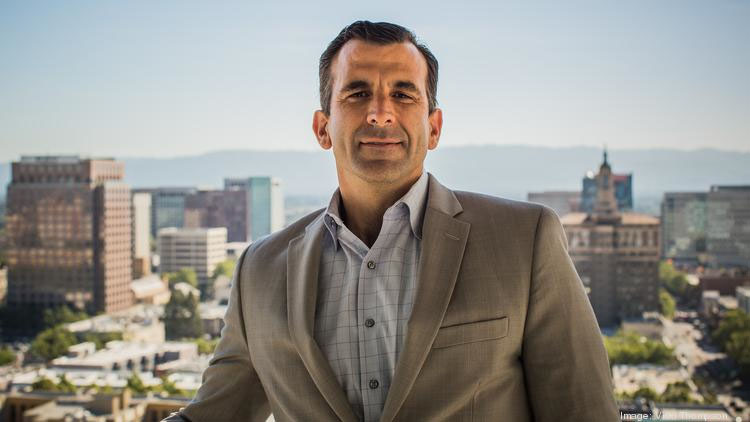SV@Home Executive Director Leslye Corsiglia comments on San Jose Mayor Sam Liccardo’s proposal for a commercial linkage fee in a story by Silicon Valley Business Journal reporter Jody Meacham.
See the original story at Silicon Valley Business Journal.
San Jose mayor spearheading proposal for regional ‘business impact fee’ to end Bay Area housing squabbles
By Jody Meacham
As bad as the Bay Area’s housing crisis is — and despite the fact there is a repeating string of stories about people are leaving or wanting to because of it — the Metropolitan Transportation Commission projects that population growth driven by tech jobs will add 2 million new residents in the next two decades to the nearly 8 million who are already here.
In Santa Clara County alone, that population growth is expected to add the equivalent of of a new Palo Alto, Mountain View, Sunnyvale, Cupertino, Santa Clara, Milpitas and Campbell to its existing 1.8 million residents.
None of the region’s nine counties has enough housing for its population now, and none is producing new housing fast enough to meet that growth. But with few exceptions, they’re fighting to get a share of those jobs and the taxes they could generate.
Which is why the MTC, which allocates state transportation funding throughout the area, and the Association of Bay Area Governments (ABAG), whose staff has been merged into the MTC, are trying to figure out a regional solution to the housing deficit, a drain on the economy, without messing up the tech sector that fuels it.
Liccardo’s proposal
San Jose Mayor Sam Liccardo, whose city is unique in the region because it already has far more residents — though far from all housed — than jobs, told his City Council last week that he feared adding to local business taxes to help fund housing solutions for fear of further discouraging business growth.
“We’ve been working with MTC staff and ABAG staff on what a regional business impact fee (to fund housing) would look like,” he said, adding that he hoped to unveil something more specific in about six weeks.
“He has come up with a proposal that would create a commercial linkage fee but make it so that it ties to what a city’s jobs/housing mix is, the balance,” said Leslye Corsiglia, executive director of the San Jose-based affordable housing nonprofit SV@Home, and one of four co-chairs of CASA, the Committee to House the Bay Area, for which MTC provides staffing. “If you’re out of balance, you’d pay a considerably higher fee than if you have more housing units than you have jobs. It’s something that we’re considering, but I don’t expect to have many more details until October.”
Jobs-rich cities like Mountain View and Cupertino are at the forefront of Bay Area tech cities considering new business taxes to fund housing and transportation projects to deal with problems accompanying their business growth. But both of those cities currently have more jobs than housing.
What Liccardo worries about are the ways companies can move across a city boundary just a few blocks away to escape taxes and play municipalities off against each other the way the National Football League wrangles stadium deals from cities wanting a team.
If there were an overlay of business fees covering the entire Bay Area, it would make it more difficult for companies to play that game, the San Jose mayor reasons.
“Anything like this, were we to accomplish it on such a grand scale, would require legislation from Sacramento,” Corsiglia said. “If these fees were just up to individual cities, we’d have a whole bunch that would decide not to participate.”
The idea with state legislation — roughly analogous to San Francisco State Sen. Scott Wiener’s ill-fated attempt earlier this year to transfer some land use authority to the state as a means of increasing housing density around transit stations — would be to structure them in a way that removes incentives for the Bay Area’s Highway 101 cities to engage in bidding wars for businesses while providing funds for more affordable housing.
Jobs-to-housing ratios
It’s an idea whose time has not yet come on San Jose’s City Council, much less among surrounding cities.
“One of our main goals is to create new commercial opportunities, new jobs, because we as a city have a lower jobs-to-housing ratio than other cities,” Councilmember Johnny Khamis said.
On the other side of that issue, Councilmember Sergio Jimenez doesn’t believe San Jose’s appeal to tech companies is as weak as Khamis or Liccardo think. Nor does he believe that the balance between jobs and housing is the only lens through which to view housing solutions. Google is planning millions of square feet in downtown office space and opponents of the business taxes proposed in Mountain View and Cupertino have spoken openly about their fears that San Jose could steal Google or Apple.
Jimenez said he remembers when Amazon.com announced last year it was searching for a second headquarters city somewhere in North America and San Jose’s economic development office put out a glossy brochure touting the city’s appeal.
“It exuded confidence,” he said. “It exuded a belief in our people, in our region, in our city. But when you have some of the discussions about having businesses paying their fair share, all of a sudden we sort of shrink in our pants and decide that we’re just not a very good city, not very attractive or we should cave in to anything that these businesses want…I feel like a lot of council members view San Jose as not a good place for business. And I just don’t think that’s the case.”

